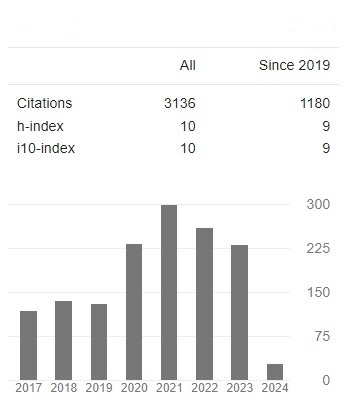Prediction of Post-Operative Clinical Parameters in Posterior Scoliosis Surgery Through An Adaptive Neuro-Fuzzy Interface System
Abstract
Rasoul Abedi
Background and Objective: Postoperative clinical indices should be estimated accurately in scoliosis correction surgeries, which have been analyzed in various studies such as experimental (in vitro or in vivo) trials through dif- ferent modeling methods (finite element or multibody analysis). These costly and time-consuming methods can only be conducted on a large number of scoliotic patients. An adaptive neuro-fuzzy interface system (ANFIS) is used in this study to estimate the postoperative cobb and thoracic kyphosis angles in adolescent idiopathic scoliosis patients undergoing posterior scoliosis correction surgeries.
Methods: Four groups of 55 patients with distinct preoperative clinical indices (thoracic cobb and pelvic incidence) were considered the ANFIS inputs, whereas postoperative thoracic cobb and kyphosis angles were used as the out- puts. For robustness evaluation, the predicted values of postoperative angles were compared with measurements by calculating the root mean square errors and clinical correction deviation indices (the relative deviation of postoper- ative predicted angles from the real angles).
Results: The least root mean square errors (3.0o and 6.3° for the main thoracic cobb and thoracic kyphosis esti- mations, respectively) were recorded in the group with the main thoracic cobb, pelvic incidence, thoracic kyphosis, and T1 spinopelvic inclination used as inputs. The clinical correction deviation indices were calculated 0.0086 and 0.0641 for cobb angles in two cases and 0.0534 and 0.2879 for thoracic kyphosis in two other cases.
Conclusion: Greater differences between preoperative and postoperative cobb angles compared with those of tho- racic kyphosis decreased the root-mean-square errors and clinical deviation indices but improved accuracy.




